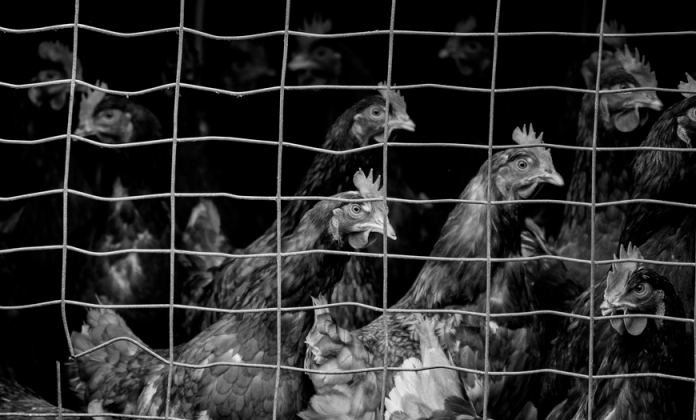As of last Friday afternoon, 13 people in the U.S. had been diagnosed with avian influenza H5, commonly known as bird flu, this year. A particular strain of this virus, H5N1, has been circulating in U.S. dairy herds for months and has already caused the deaths of millions of birds. The 13 human cases reported up to that point were generally mild, with all of them clearly linked to contact with infected livestock or poultry. When I spoke with experts in July, they emphasized that a serious concern would only arise if the virus showed signs of spreading between people.
Then came Case 14. According to a CDC update, another individual has now contracted an H5 virus, this time in Missouri, with no known exposure to sick farm animals. In other words, the potential for a more widespread and dangerous outbreak might be increasing.
Despite the possible significance of this new case, the CDC’s report didn’t get much attention. While major news outlets covered the story, it was overshadowed by other pressing events over the weekend, including the conflict in Gaza, a tragic high school shooting, and a presidential debate. When I mentioned the new case to my husband, a historian, he was unfazed. Even after I explained the possible implications—human-to-human transmission—he merely acknowledged that it “seemed bad” and continued with dinner. The next night, at a wedding party in Brooklyn, I brought it up again, wondering if others were concerned. No one had heard of the Missouri case, and even after I explained it, few seemed to care. This reflects our current relationship with bird flu: a mix of cautious observation and widespread indifference. While the risk may still be low, the stakes are undeniably high, and each new development makes the situation feel just a bit more precarious. Yet it remains difficult to gauge the importance of these updates.
For most people, ignoring bird flu for now might be the right approach. Besides, bringing up a new virus at a wedding is a guaranteed way to ruin the mood (apologies to Max and Daphne!). According to the CDC, the overall risk to the public from bird flu “remains low.” The Missouri case, which surfaced through seasonal flu surveillance, is still a mystery. There’s no conclusive evidence that the virus was transmitted from another person; the patient might have contracted it from a contaminated bird feeder, an infected pet, or possibly from drinking raw milk. Aside from the fact that the patient is an adult with underlying health issues and was treated in the hospital with antiviral medications, not much else is known, including their age. It’s even unclear whether bird flu was the primary reason for their hospitalization. The most reassuring fact so far is that the patient does not appear to have spread the virus to anyone else.
This situation leaves public health officials and journalists in a delicate position. It would be premature—and irresponsible—to declare a new pandemic is looming. Yet bird flu remains a serious and growing threat, and the current state of heightened expert vigilance versus widespread public ignorance is unsettling. The mere fact that H5N1 continues to spread through U.S. farms, infecting chickens, cows, and pigs, presents ample opportunity for the virus to evolve or mutate into something more dangerous. As one flu expert put it to me this summer, “It’s like playing the lottery—we’re giving this virus a lot of tickets.”
The public should be aware of this risk and take it seriously. But how do you communicate such an in-between situation? With COVID still fresh in people’s minds, few are eager to think about another virus or the possibility of more masks and restrictions unless absolutely necessary. “Just let me know when I need to tell my elderly parents to start being careful,” a friend said. By that standard, bird flu can be ignored for now. Even with the Missouri case, there’s no evidence suggesting a pandemic is imminent. Still, the facts may shift, and experts are waiting on more data. Once the CDC confirms the exact subtype of the virus involved in the Missouri case, we’ll know whether the patient was indeed infected with the same H5N1 strain currently circulating in U.S. farms.
Even if this turns out to be a false alarm, those monitoring bird flu seem increasingly uneasy. The fact that more than a dozen people have already been infected this year is concerning enough. At any moment, a few mutations could trigger the next global outbreak. While the public needn’t worry yet, the gap between what’s happening with bird flu and how it’s being received feels stranger by the day.







